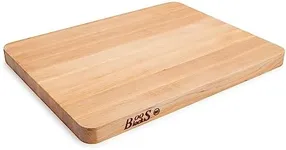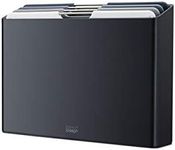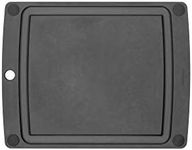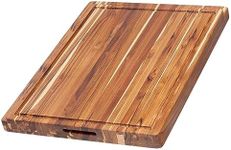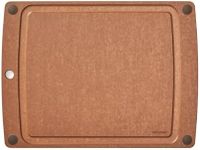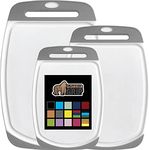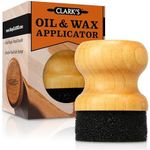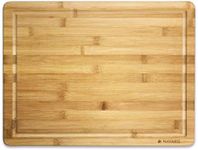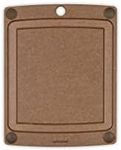Buying Guide for the Best Cutting Board
Choosing the right cutting board is important for both your cooking experience and the longevity of your kitchen tools. A good cutting board protects your knives, provides a safe and stable surface for food preparation, and is easy to clean. When picking a cutting board, consider how you cook, what types of food you prepare most often, and how much space you have in your kitchen. Understanding the key features will help you select a board that fits your needs and keeps your kitchen running smoothly.MaterialThe material of a cutting board affects its durability, how it treats your knives, and how easy it is to clean. Common materials include wood, plastic, bamboo, and composite. Wood boards are gentle on knives and have a classic look, but require more care and are not dishwasher safe. Plastic boards are lightweight, easy to clean, and dishwasher safe, but can develop deep grooves over time. Bamboo is harder than wood and more eco-friendly, but can be tough on knives. Composite boards combine durability and ease of cleaning, but may be heavier. Choose a material based on your maintenance preferences, how often you use your board, and whether you prioritize knife care or easy cleaning.
SizeThe size of a cutting board determines how much space you have to work with and how easy it is to store. Small boards are great for quick tasks like slicing fruit or cheese, while medium boards are versatile for most home cooking. Large boards provide ample space for chopping multiple ingredients or handling big items like roasts, but require more storage space. Think about the types of meals you prepare and the available counter space in your kitchen to decide which size will be most convenient for you.
ThicknessThickness affects the stability and durability of a cutting board. Thinner boards are lightweight and easy to move or store, but may warp or slide around during use. Thicker boards are sturdier and less likely to move, making them better for heavy chopping, but they are heavier and take up more space. If you do a lot of heavy-duty chopping, a thicker board is a good choice. For lighter tasks or if you need to save space, a thinner board may be sufficient.
Surface TextureThe surface texture of a cutting board can influence how food and knives interact with it. Smooth surfaces are easy to clean and good for most tasks, but can become slippery when wet. Some boards have a slightly textured or grooved surface to help keep food in place and collect juices. If you often cut juicy foods like tomatoes or meat, a board with a juice groove can help keep your counter clean. Consider what types of food you prepare most often to decide which surface texture is best for you.
MaintenanceMaintenance refers to how easy it is to clean and care for your cutting board. Some boards, like plastic or composite, can go in the dishwasher, making cleanup simple. Wood and bamboo boards require hand washing and occasional oiling to prevent cracking and warping. If you prefer low-maintenance kitchen tools, look for a board that is dishwasher safe. If you enjoy caring for your kitchenware and want a board that will last for years, a wood board may be worth the extra effort.
